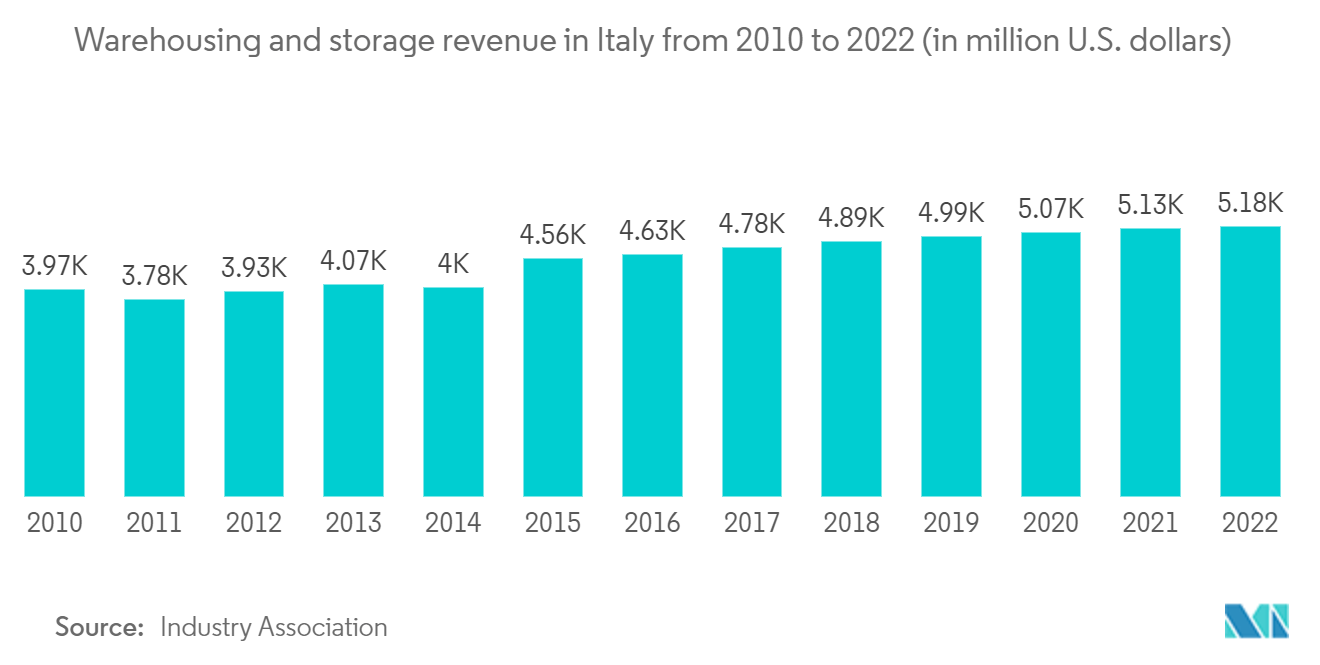Market Trends of Italy Chemical Logistics Industry
Growth in the Pharmaceutical Industry is Driving the Market
- An aging population and a surge in chronic diseases are driving up the demand for medications, particularly specialty drugs and biologics. These drugs often come with intricate logistics requirements, given their temperature sensitivity and specific handling needs. The growing emphasis on personalized medicine and targeted therapies further underscores the need for streamlined and dependable logistics to ensure the timely delivery of tailored treatments.
- As an illustration, in 2022, Italy had 37 individuals aged 65 or above for every 100 working-age individuals (aged 15-64). Projections suggest this ratio will climb to 65 by 2050. The Italian Statistics Institute estimates that the population aged 80 and above will witness a 35% surge from 2021, surpassing 6 million by 2041.
- Industry sources indicate that the revenue of the Italian pharmaceuticals market is poised for steady growth from 2024 to 2028, with a cumulative increase of EUR 4 billion (USD 4.34 billion)(+24.81%). After marking its sixth consecutive year of growth, the market's revenue is projected to hit EUR 20.13 billion, setting a new milestone in 2028.
- Pharmaceutical companies are increasingly adopting a global approach, sourcing materials and manufacturing drugs from various corners of the world. This shift necessitates robust international logistics solutions to ensure seamless movement of goods. Leveraging its strategic position in Europe, Italy has emerged as a pivotal hub for pharmaceutical logistics, catering to both domestic and international markets.

Expansion of Warehousing and Distribution in the Country is Boosting the Market
- Strategic placement of warehouses near key transportation hubs and production centers in Italy is optimizing delivery times and curtailing transportation expenses. For instance, DISTA SpA, a prominent player in chemical logistics, has established warehouses in both Northern and Southern Italy, efficiently catering to distinct regions.
- Employing advanced warehouse management systems (WMS), such as cloud-based solutions, logistics firms like Sealog Logistics are bolstering inventory control, streamlining picking and packing, and enhancing order fulfillment. These measures not only boost efficiency but also lead to cost reductions.
- Seamlessly integrated with multiple transportation modes—road, rail, and sea—warehouses are enabling multimodal transport solutions. This integration facilitates cost-effective options, tailored to both distance and urgency. Notably, CMA CGM Air Cargo and CEF Storage & Logistic Services have joined forces to offer integrated airfreight and warehousing solutions, catering specifically to the chemical sector in Italy.
- Warehouses dedicated to handling chemicals adhere to stringent safety regulations. These facilities boast temperature-controlled environments, designated explosion-proof zones, and robust ventilation systems. Logistics giants like Gefco are going the extra mile, providing dedicated teams and comprehensive training programs to ensure safe handling, storage, and meticulous documentation of hazardous materials in Italy.


